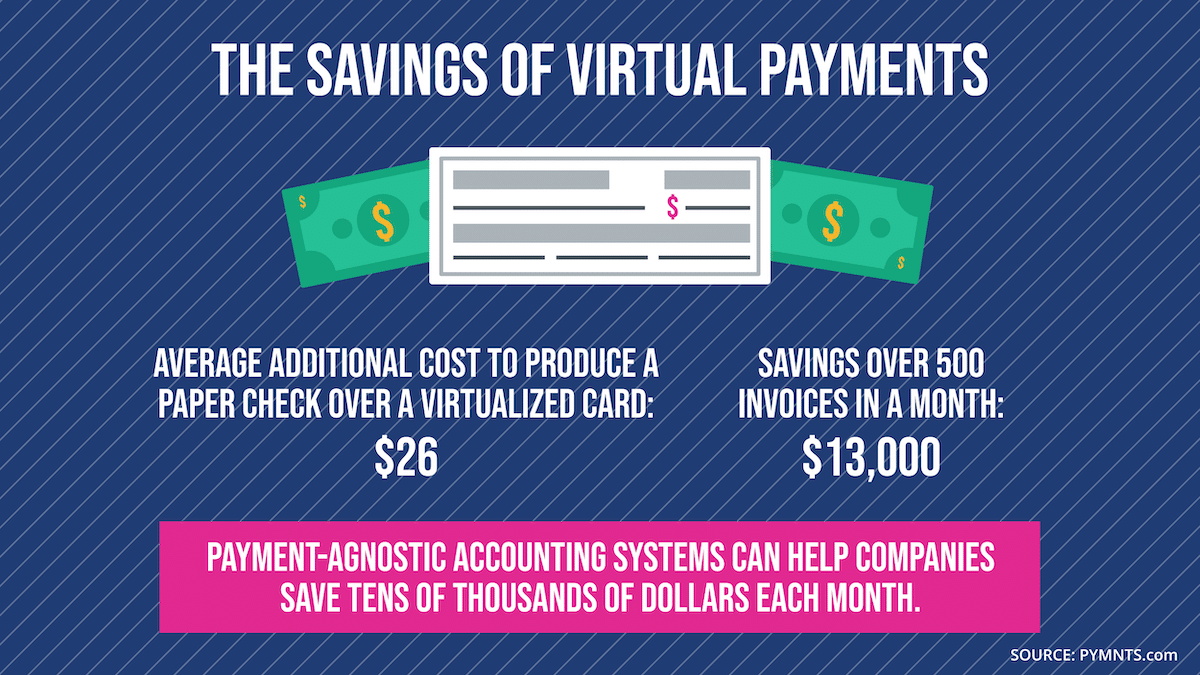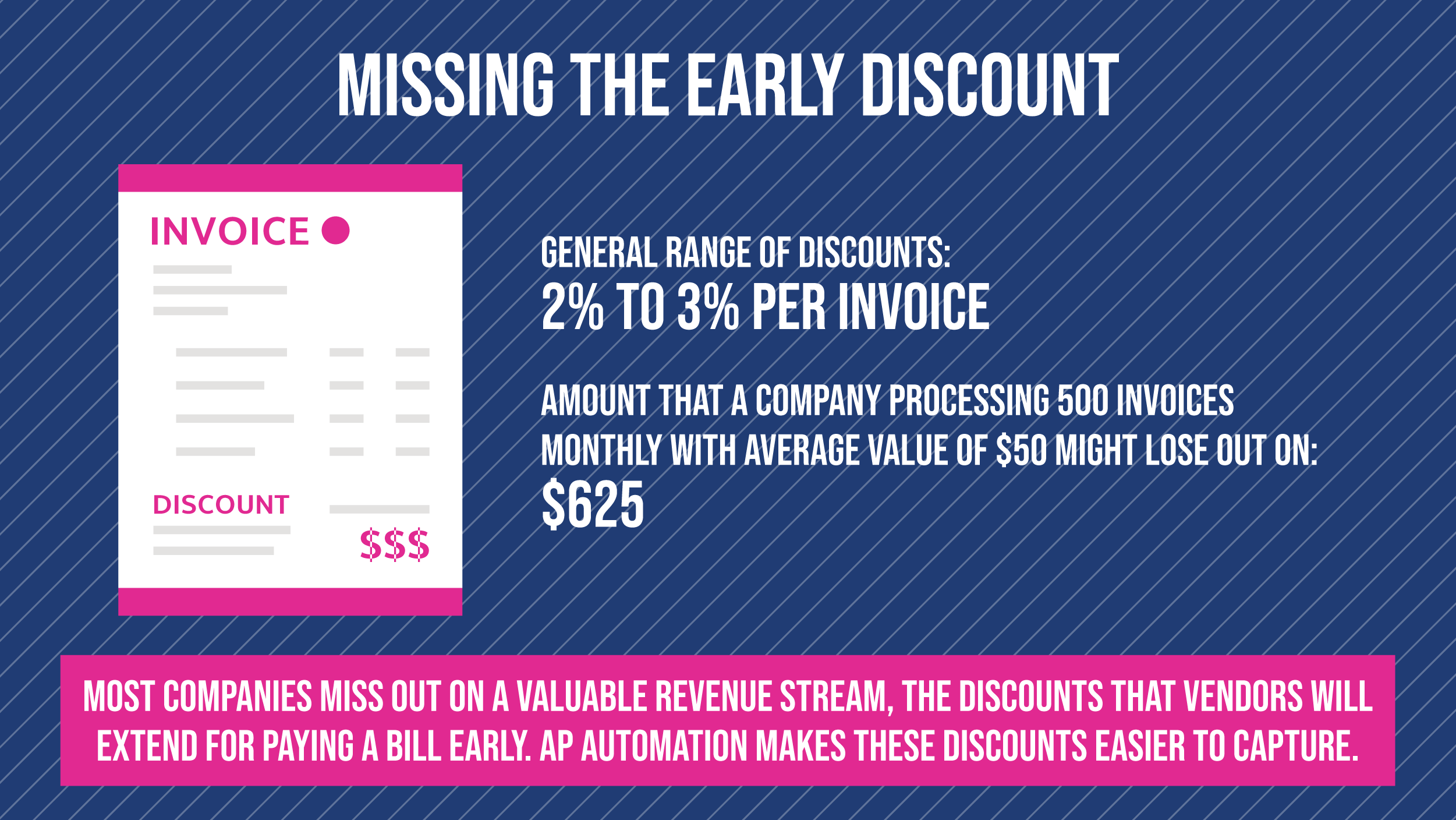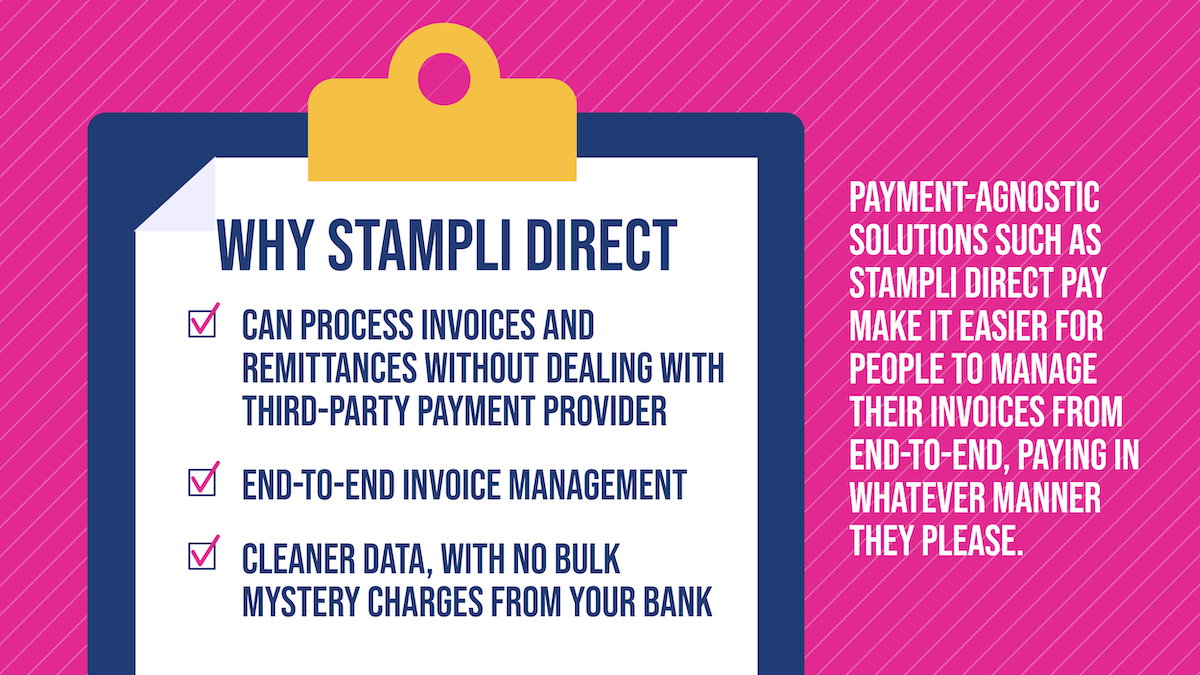Navigating the B2B Payments Landscape in Uncertain Times

Conventional wisdom might say that accounts payable departments should lay low during difficult economic times, especially when it comes to changes or projects.
After all, when things get tough, it seemingly makes sense for AP teams to seek payment terms that are as favorable as possible with their vendors, cut unnecessary expenditures, and halt any significant capital improvement projects. Operating during periods of intense upheaval and uncertainty means conserving every dollar an AP team has, right?
Not so much.
When it comes to AP, like much of business, austerity policies can be penny-wise and pound-foolish, especially when it comes to putting off big upgrades. Join us as we dig into the contemporary payments landscape for B2B, why it’s wise to not put off major projects like AP automation, and how partners like Stampli can help make it happen.
The Current B2B Payments Landscape

Before we go into where AP teams should be heading – especially during a recession – it’s important to take a look at where they currently are. Today’s B2B payments landscape isn’t easy by any means. Accounting staff member are being asked to do more with less than ever; the push for automation is on, and companies need more flexibility with payments.
Changing Roles for Accounting Staff
It’s common in recessions for employees to wear more hats, though in the world of accounts payable, this has been happening for years.
In the current B2B payments landscape, an accounts payable employee is as likely to be a clerk making sure their company’s vendor or contractor gets paid on-time as they are to be an analyst monitoring lists of myriad transactions for the latest payment trends or signs of fraud.
Of course, accounting staff are also likely to be in smaller departments, too, a reflection of the temporary and, in many cases, now-permanent layoffs that have swept across the country. They might have less leadership to rely on as well, with 2020 witnessing a record number of CFO resignations. Because of this, the staff that remains has to be more self-reliant and able to competently handle a variety of tasks.
More Use of Automation
Once upon a time, accounts payable work was done almost strictly in an office, where staff would use a proprietary accounting system to key in invoices, gather necessary approvals, and print checks. Suffice it to say, the pandemic has been hastening a shift away from this as well, with more and more companies starting to implement cloud-based accounts payable automation software platforms.
There’s been a benefit for companies that got ahead of the curve before the pandemic. As one author for the Pennsylvania Institute of Certified Public Accountants wrote in a November 2020 post, “Accounts payable departments that implemented invoice processing and payment automation on a broad scale prior to the crisis found greater successes transitioning to remote work. Those who hadn’t are now following suit.”
More Flexibility in Payments
Businesses no longer have just one way of paying their bills, i.e. cutting a paper check. While it’s perfectly OK for businesses to use paper checks — and Stampli can even print and mail checks directly to a company’s vendors with its Direct Pay tool — having a good, payment-agnostic AP automation system in place can help ensure that vendors can be paid however and whenever they prefer.
It’s no surprise that the ongoing COVID-19 pandemic and its resultant dramatic increase in remote work appears to be accelerating the trend away from paper checks. ACH Network traffic grew 8.9% in the final quarter of 2020.
One executive told PYMNTS.com in that post that buyers have incentive to virtualize their payment process, saying, “The enhanced data they’re able to generate through virtualization simplifies reconciliation and gives them access to reporting, enabling them to better forecast future cash flows.” Word has gotten out about the cost savings of digital payments, too, with the executive telling the website it cost about $26 more to produce a check than a virtualized card.
Why Not to Delay AP Upgrades, Even in Tough Times

Perhaps a company has had the same legacy accounting system in place for many years, using internal IT staff and moxie to keep it running no matter what. Investments to improve the status quo might require an intense investment of both dollars and personnel. The last thing a company might want during tough economic times is to go through the process all over.
Here are a few reasons, though, why it might not be so painful when a business opts for AP automation software.
Sticking With Old Systems Can Slow Efficiency and Increase Cost
It’s started to become clearer in recent years that modernizing AP operations carries solid benefits for companies that do it.
Companies reliant on manual accounting processes and legacy systems fall behind literally, too, as they need more time for each invoice. This can quickly consume already-scant personnel time within AP departments and compound stress. By contrast, modern AP Automation solutions can decrease invoice processing times and lower costs.
One Stampli customer told us they’re “definitely seeing a reduction in OPEX with Stampli. Not only have we reduced invoice backlog by at least 50% in the first few months, but we’ve eliminated paying duplicate invoices. That’s something that seemed to happen more often than not,” said Peter Taylor, Corporate Controller at Purple.
A Cloud-Based AP System Makes Vendor Discounts More Attainable
A common pain point for AP departments is collecting the early payment discounts, generally a 2% to 3% discount that many vendors will offer for paying a bill early.
Some companies miss these discounts consciously even in normal economic times because cashflow can be tight and it might make more sense to allocate funds in different areas in the short-term. Other companies, however, likely lose out on early payment discounts because old, manual-based accounting processes make it harder to stay on-top of payment deadlines and make the approval process take longer.
But that doesn’t mean the discounts wouldn’t be needed, as PYMNTS.com explained in a July 2020 post that referenced its Next-Gen AP Automation Tracker.
“Automating AP processes can save SMBs time processing invoices and sending funds, which then enables them to choose to pay their vendors faster,” the report noted. “This, in turn, can earn SMBs early-payment discounts or position them to negotiate for benefits from vendors.”
AP Automation is More Affordable These Days – With the Right Partner
Gone are the days where companies might have to spend months, if not years, building a costly, soon-to-be-outdated internal accounting system. AP automation partners can implement cloud-based payment systems in as little as 24 hours, without long-term commitments or the risk that the system will immediately become a dinosaur.
Accordingly, the right automation partner provides as much training and technical support as possible for the companies that it helps.
How Stampli Helps Navigate the B2B Payments Landscape

With so many potential AP automation firms out there, how can companies know who to work with? Obviously, a business’s particular objectives and geographic proximity might play into its decision. But here are a few reasons to consider Stampli.
A Leader in AP Automation for Six Consecutive Quarters
Many companies will say they’re the best at whatever niche they’re occupying. In Stampli’s case, it has some plaudits to back this up.
The business review website G2 Crowd has named Stampli a leader in AP automation for six consecutive quarters. The site also named Stampli a leader in invoice management and billing, with users praising Stampli’s training, support, and intuitive design.
As a five-star G2 reviewer shared, “Stampli’s invoice approval process has made our AP team’s lives a million times easier!”
End-to-End Invoice Management with Stampli Direct Pay
With 2020 a tough year for many companies, Stampli bore down to make its product easier for remote teams and more flexible for payment.
In October, the company introduced Stampli Direct Pay, giving customers payment-agnostic features that allowed them to pay invoices however they chose – inside of Stampli by check or ACH or outside of Stampli. This in turn provided end-to-end invoice management, with customers able to use Stampli through every stage of the procurement-to-payment, or P2P process.
“With the launch of Direct Pay, Stampli is poised to take on a variety of new competitors with an obvious differentiator,” TechCrunch wrote when the new feature launched, adding that Stampli was already processing $13 billion annually in invoices.
A Cleaner, Easier B2B Payments Landscape with Stampli
At the end of the day, innovations like Stampli Direct Pay are not technology simply for the sake of technology. It’s not about wowing customers simply to make a sale. Nor is it about nudging customers toward a specific type of payment.
What it’s about is helping make payments cleaner and more straightforward. The B2B payments landscape remains challenging and ever-changing. Features like Stampli Direct Pay are a substantial way to make it a little easier to navigate confidently.
We’ll help you through this B2B payments landscape. Check out Stampli Direct Pay today.